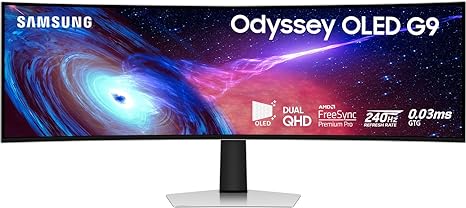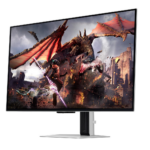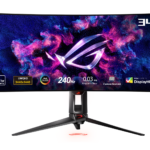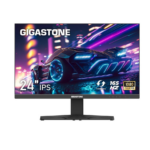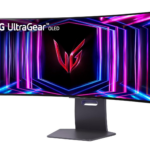When it comes to choosing the perfect monitor for your needs, there are various factors to consider. Two popular options in the market today are OLED (Organic Light Emitting Diode) monitors and DQHD (Dual Quad High Definition) monitors. These two technologies offer unique features and display qualities that set them apart from each other. This article will delve into the distinctions between OLED and DQHD monitors, providing a deeper understanding of their visual disparities.
OLED vs. DQHD Monitors: Unraveling Visual Disparities
OLED monitors utilize organic compounds that emit light when an electric current is applied, resulting in vibrant and accurate colors. The individual pixels in an OLED display emit their own light, allowing for deep blacks and infinite contrast ratios. The SAMSUNG 49-inch Odyssey G93SC Series monitor is a good example. This means that OLED monitors can produce incredibly rich and true-to-life images, with each pixel being individually lit or turned off. The result is a stunning visual experience with exceptional color accuracy and contrast.
On the other hand, DQHD monitors refer to the display resolution, which stands for Dual Quad High Definition. These monitors have a resolution of 5120×1440 pixels, which offers an ultra-wide aspect ratio, providing a wider field of view. DQHD monitors are designed to enhance productivity and immersive gaming experiences with their expansive display space. SAMSUNG 49-inch Odyssey G9 Series DQHD monitor is a good example. With their high pixel density, they deliver sharp and detailed images, ensuring that every detail is crisp and clear. DQHD monitors are particularly popular among professionals who require a larger workspace or gamers who prefer a more immersive gaming environment.
Analyzing Display Differences: OLED vs. DQHD Monitors

While both OLED and DQHD monitors offer impressive visual capabilities, they differ in terms of technology and use cases. OLED monitors deliver exceptional color accuracy, deep blacks, and infinite contrast ratios. They are ideal for photographers, graphic designers, and anyone who values accurate color representation in their work. OLED displays are also well-suited for watching movies and playing games that require stunning visuals and vibrant colors.
On the other hand, DQHD monitors focus on providing a wider field of view and enhanced productivity. The higher resolution and ultra-wide aspect ratio of DQHD monitors allow users to open multiple windows simultaneously, making multitasking more efficient. These monitors are particularly beneficial for professionals who require a large workspace, such as video editors, programmers, and financial analysts. Additionally, DQHD monitors are favored by gamers who want to experience a more immersive gaming environment with a wider field of view.
When it comes to choosing between OLED and DQHD monitors, it ultimately depends on your specific needs and preferences. If color accuracy and stunning visuals are your top priority, an OLED monitor would be an excellent choice. However, if you require a larger workspace and enhanced productivity or desire an immersive gaming experience, a DQHD monitor might be the better option. Consider the purpose of your monitor and the tasks you will be performing to make an informed decision. Both technologies offer unique advantages, so the choice ultimately comes down to personal preference and specific work or leisure activities requirements.
More Monitor Options
- Epic Gaming With The 240Hz Samsung 32-inch Odyssey G8 OLED
- The Amazing Acer Nitro XZ342CU V3 Review
- Ultimate Gaming Monitor: ASUS 34-inch 240Hz OLED Curved
- Immerse Yourself in Vivid Gaming with Gigastone 24″ IPS 165Hz FHD Monitor
- Elevate your gameplay with the LG 34-inch 240Hz Gaming Monitor
- LG 27-inch UltraGear 27GP850-B: The Ultimate 165Hz IPS Gaming Monitor


